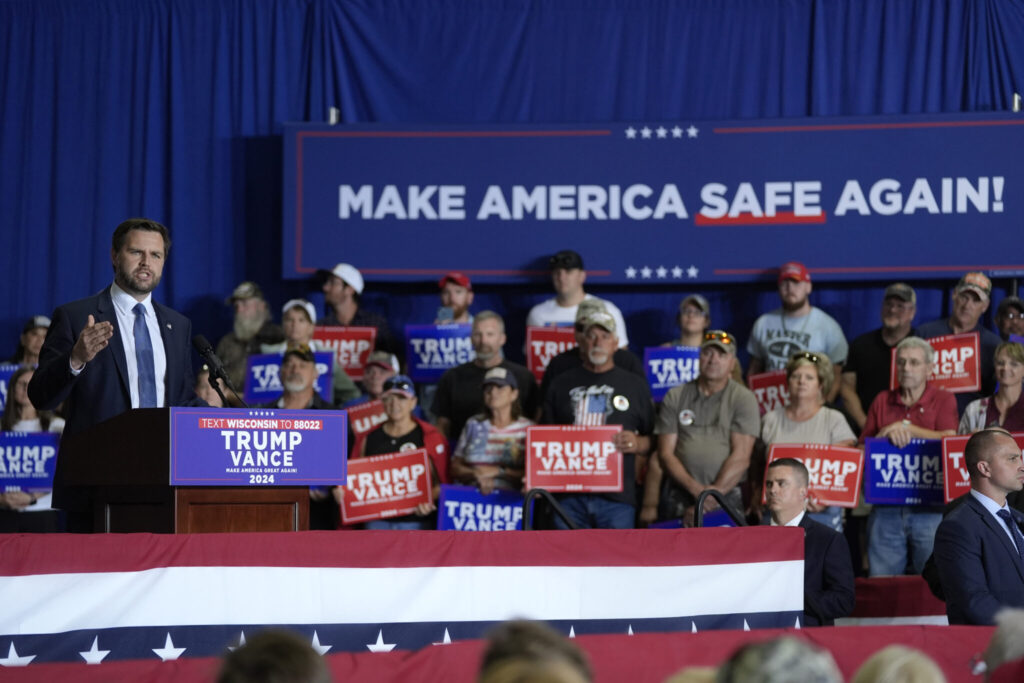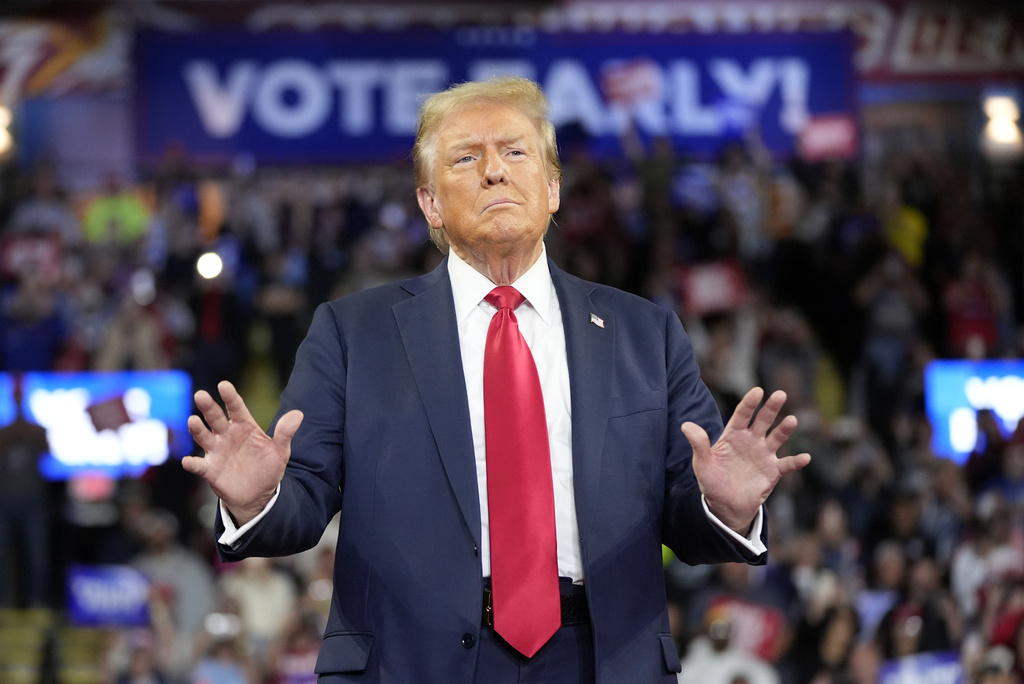Trump immigration Colorado/ anti-immigration message Aurora/ mass deportation plans/ Trump rally 2024/ immigration policy campaign/ Newslooks/ AURORA/ COLORADO/ J. Mansour/ Morning Edition/ Donald Trump took his anti-immigration message to Aurora, Colorado, emphasizing a plan for mass deportations and targeting recent arrivals in smaller American communities. His rhetoric on immigration aims to rally support from conservative voters in key states.

Trump Colorado Rally Quick Looks
- Campaign Stop: Trump visited Aurora, Colorado, to spotlight immigration concerns.
- Focus on Deportations: Trump reiterated plans for the largest deportation effort in U.S. history.
- Targeted Communities: He referenced incidents involving migrant communities in Aurora and Ohio.
- Bipartisan Immigration Concerns: Both Trump and Harris have taken hard stances on immigration.
- Voter Appeal: Trump aims to engage conservative and undecided voters in battleground states.
Trump Amplifies Anti-Immigration Message at Colorado Rally
Deep Look
On Friday, Donald Trump took his anti-immigration platform to Aurora, Colorado, shifting from typical battleground states to focus on issues affecting smaller American communities. During his rally, Trump emphasized a message that migrants, particularly those arriving in suburban areas, are overwhelming local resources and shifting community dynamics, though critics argue that his claims often rely on exaggerated or misleading narratives.
Aurora, a city that recently attracted attention over immigration concerns, served as the backdrop for Trump’s call for mass deportations and intensified border enforcement. The former president reiterated his commitment to “the largest deportation operation in U.S. history,” a promise central to his campaign since he first ran in 2015. Trump claimed that small cities and towns experiencing increased migrant arrivals have seen resources stretched and rising tensions over rapid demographic changes.
The Colorado suburb made headlines in August when a video surfaced showing armed individuals in an apartment complex housing Venezuelan migrants. Trump has used this example frequently, alleging that Venezuelan gangs are “taking over” neighborhoods, though authorities clarified that the incident was isolated and the situation is under control.
Trump’s running mate, Ohio Senator JD Vance, has also echoed these claims in other communities, such as Springfield, Ohio, where migrants from Haiti have been accused, without evidence, of actions like pet theft. This messaging, Trump said, is meant to illustrate the need for stronger immigration controls, and he has named both Aurora and Springfield as “priority” locations for enforcement under a future administration.
While Colorado and Ohio are not highly competitive in the presidential race, Trump’s anti-immigration stance aims to sway voters in critical swing states. Vance recently visited Eau Claire, Wisconsin—a city with a large refugee population from Africa and Asia—and promoted Trump’s promise to step up deportations, claiming immigrants have “overrun” local resources and put pressure on small communities.
In his Colorado rally, Trump pledged to target not only those he describes as “criminals” but also migrants legally residing in the U.S. under programs like Temporary Protected Status (TPS). Trump has frequently criticized Vice President Kamala Harris’s immigration policies, accusing her of being too lenient. In a recent speech, he claimed that Harris’s policies are responsible for “one of the biggest crime stories of our time.”
Harris, in response to conservative critiques, has adjusted her stance on immigration, emphasizing a balanced approach to border security. Her strategy has incorporated some tougher immigration stances that aim to appeal to moderate voters and address perceived vulnerabilities in the current administration’s policy.
On the campaign trail, Trump frequently draws attention to violent incidents allegedly involving immigrants, often using incendiary language to emphasize what he sees as a threat to American society. He recently suggested that some violent suspects have “bad genes” and has described individuals suspected of violent crimes as “animals.” Analysts say Trump’s messaging, which often singles out specific incidents, is crafted to trigger strong responses from conservative voters concerned about immigration.
Chris Haynes, a political science professor and author on public opinion regarding immigration, described Trump’s approach as “episodic branding,” which uses specific incidents to cast immigrants in a negative light. Haynes notes that Trump’s rhetoric appeals to his core base and may also resonate with moderate voters concerned about security.
The former president’s approach is resonating with some voters. At his recent Pennsylvania rally, Erie resident Jeffrey Balogh expressed support for Trump’s stance on immigration. Balogh recounted feeling “uncomfortable” encountering a group of foreign-language speakers outside a local business. Such sentiments reflect Trump’s targeted messaging, which focuses on the perceived impact of immigration on everyday American life.
Trump has also blamed Harris and President Joe Biden for what he claims is a lax immigration policy that has led to record-high arrivals and increased crime, although data shows that crime rates have fallen since a pandemic-era spike. He cites specific criminal cases where the accused were migrants, arguing that these cases show a need for drastic immigration policy shifts.
For Harris, immigration has become a balancing act. Prior to her run, Biden shifted his immigration stance rightward, but now, as the Democratic nominee, Harris faces pressure to address what many Americans see as one of her administration’s most contentious issues.
Colorado, a traditionally Democratic state, has not seen much presidential campaign attention this cycle, but Trump’s appearance underscores his campaign’s interest in energizing Republican support. This rally also marks his campaign’s first appearance in the state, underscoring his continued focus on immigration as a key voter motivator.







